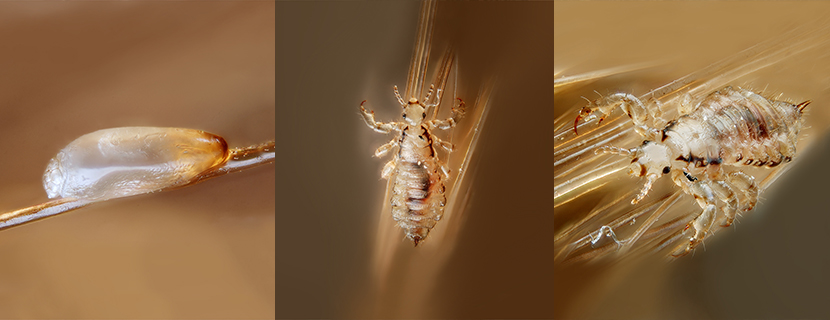Dealing with head lice can be a challenging experience, particularly in identifying and distinguishing them from other common scalp conditions. This comprehensive guide aims to provide clarity and understanding through detailed images and descriptions of head lice, helping you accurately identify and effectively treat infestations.
The Nature of Head Lice
Head lice are tiny, wingless insects that thrive on the human scalp, feeding on blood. Common among school-aged children, they can affect anyone, regardless of personal hygiene. Understanding their appearance, behavior, and life cycle is essential to effectively managing an infestation.
The Lifecycle of Head Lice
The lifecycle of head lice begins with eggs, known as nits, which are laid by the female louse. These nits hatch into nymphs, which eventually mature into adult lice. This section offers detailed visuals and explanations of each stage, emphasizing the differences in appearance and size.
Recognizing Lice and Nits in Hair
Identifying lice and nits requires careful examination. Nits are often found attached to hair shafts, appearing as tiny, oval, and often yellowish or white specks. Adult lice are larger, about the size of a sesame seed, and move quickly, making them harder to spot.
Mistaking Lice for Other Scalp Conditions
It’s common to confuse head lice with dandruff, dry scalp flakes, or hair product residue. Unlike these conditions, nits are firmly attached to hair strands and cannot be easily brushed off. Understanding these differences is crucial for accurate identification and treatment.
Determining if lice is present
Effective Treatment of Head Lice
Various treatments are available for head lice, ranging from over-the-counter shampoos and lotions to professional treatment options. It’s important to follow OTC treatment instructions carefully and to be vigilant in checking and treating all family members to prevent reinfestation. For a one-and-done treatment options or more persistent or severe infestations, professional treatments offer the highest rate of success. Treatments like the AirAllé device, used by Lice Clinics of America, utilize controlled heated air to effectively eliminate lice and nits, providing a safe and efficient solution.
Preventative Strategies
Regular hair checks, especially in children, are vital for the early detection and prevention of lice infestations. Educating children on avoiding head-to-head contact and not sharing personal items like combs, hats, and hair accessories can significantly reduce the risk of spreading lice. In addition to treating the hair, it’s important to manage the environment to prevent the spread of lice. This includes laundering bedding and clothing in hot water, vacuuming carpets and furniture, and cleaning personal items such as hair brushes and hair accessories.
Navigating the Emotional Impact
Lice infestations can lead to stress, anxiety, and embarrassment, particularly for children. Addressing the infestation calmly and reassuringly, while educating about the commonality and treatability of lice, can help reduce the psychological impact.
Conclusion
Identifying and effectively treating head lice requires an understanding of what you’re dealing with. This guide, through detailed pictures and descriptions, aims to provide the necessary information and tools to confidently tackle a lice infestation. Early detection, correct identification, and appropriate treatment are key components in managing head lice. For those seeking professional assistance, Lice Clinics of America offers expert advice, effective treatment options, and comprehensive support to ensure a successful and stress-free resolution.
Key Takeaways
Comprehensive Guide to Identifying Head Lice
- Characteristics and Behavior of Head Lice: Detailed description of the physical appearance and movement patterns of head lice, highlighting their size, color, and common misconceptions about their behavior.
- Life Cycle of Head Lice and Identification: Exploration of the three stages of head lice—nits, nymphs, and adults—with emphasis on distinguishing features at each stage for accurate identification.
- Distinguishing Lice and Nits from Other Scalp Conditions: Guidelines on differentiating head lice and nits from common scalp conditions like dandruff, including physical characteristics and attachment to the hair.
- Effective Treatments for Head Lice: Overview of various treatment options, from over-the-counter shampoos and lotions to prescription medications, and the importance of following treatment instructions for successful eradication.
- Professional Treatment Options for Severe Infestations: Insight into professional treatments like the AirAllé device, its working mechanism, and its effectiveness in treating persistent lice infestations.
- Prevention Strategies and Navigating the Emotional Impact: Tips on regular hair checks, avoiding head-to-head contact, and cleaning practices for personal and household items to prevent lice infestations and control their spread.
